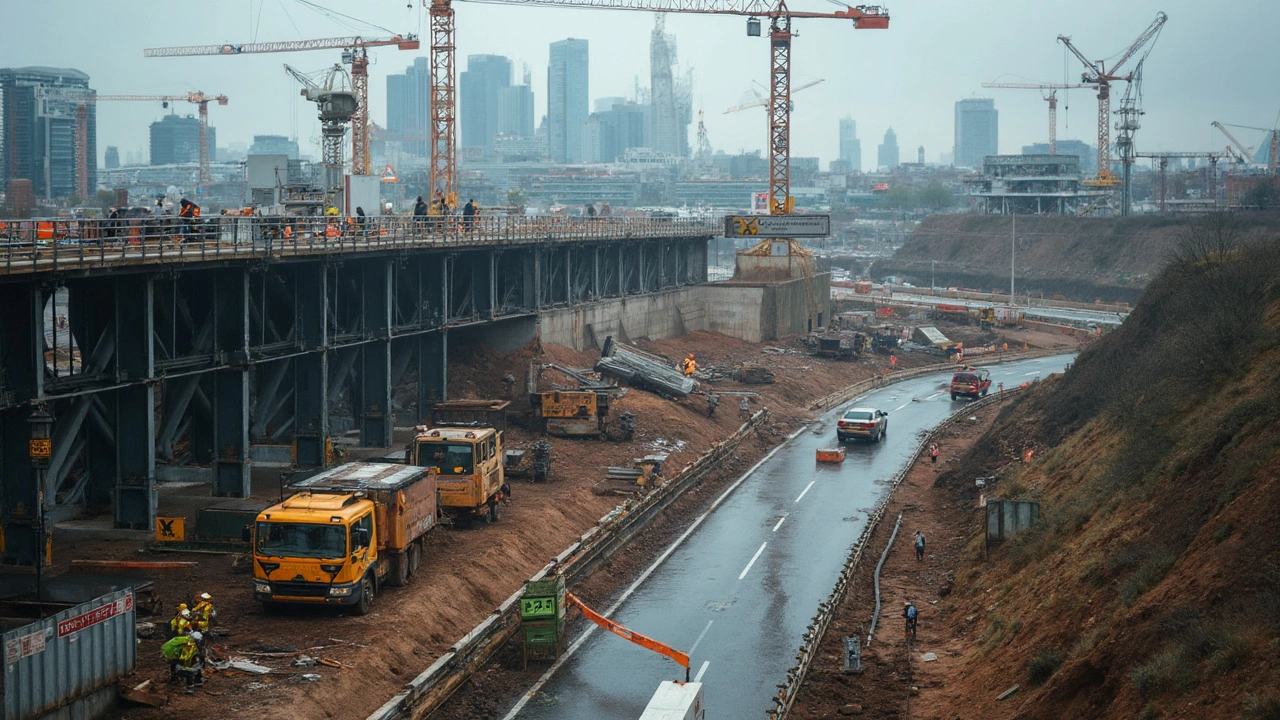Infrastructure Tips for Home and Business Projects
If you own a house, run a shop, or just care about keeping things solid, you’ll need good infrastructure advice. That means knowing how to fix a cracked foundation, choosing the right roof, and spotting problems before they cost a lot. Below you’ll find straight‑forward tips you can use right away.
Why good infrastructure matters
Every building starts with a base – walls, floors, roof, and the hidden bits like plumbing and wiring. When any part of that base is weak, you get drafts, leaks, or even safety hazards. A strong foundation stops walls from shifting, a solid roof keeps out rain, and proper plumbing avoids mould. Fixing these things early saves money and stress later.
Explore our most read infrastructure guides
Our blog has short, practical posts that walk you through common issues. Here are a few that readers love:
- Foundation Problems: Proven Solutions for Long‑Lasting Home Stability – Spot cracks, understand why they happen, and learn simple repair steps.
- Can You Get Sick from Building Mold? Health Risks, Signs, and Solutions – Learn how mould spreads, how to spot it, and quick fixes to protect health.
- Is $30,000 Too Much for a Roof? Real Costs, Tips & Red Flags for Homeowners – Break down roof pricing, what to check, and how to avoid overpaying.
- Major Foundation Issues: Recognizing Structural Damage Signs and Solutions – Find out when a crack needs a pro and when a DIY patch will do.
- How to Make Your Bedroom Look Cozy: Tips for a Snug and Inviting Space – Simple lighting and fabric tricks that don’t require a remodel.
Each post gives you a quick checklist, easy language, and clear next steps. No jargon, no fluff – just what you need to keep your property sound.
When you start any project, write down three things: the biggest risk, the cheapest fix, and the timeline. That tiny habit keeps you focused and stops you from overlooking hidden costs.
If you’re not sure where to begin, start with the foundation. Look for vertical cracks in walls, doors that stick, or uneven floors. A simple DIY sealant can work for hairline cracks, but larger gaps often need a professional to inject resin or add steel supports.
Next, check the roof after any heavy rain. Walk the attic, feel for water spots, and watch for missing shingles. Replacing a few damaged pieces now can stop a leak that would ruin insulation later.
Lastly, keep an eye on moisture. Bad ventilation in bathrooms or basements invites mould. A small dehumidifier or better vent fan keeps the air dry and stops that musty smell before it spreads.
Good infrastructure isn’t a one‑time fix; it’s a habit of regular checks and quick repairs. Use the guides above, set a quarterly inspection calendar, and you’ll keep your home or business safe and comfortable for years.
What Does Civil Construction Include? A Clear Breakdown of Key Components
- Gavin Whitaker
- |
- |
- 0
Civil construction includes roads, bridges, water systems, sewage networks, and public transit - the essential infrastructure that keeps cities running. Learn what’s included and how it differs from commercial building projects.
View moreWhat Does Civil Construction Include? A Clear Breakdown of Key Components
- Gavin Whitaker
- |
- |
- 0
Civil construction includes roads, bridges, water systems, stormwater control, and public utilities. It's the infrastructure that keeps communities running, built by public funds and designed for long-term safety and function.
View moreHeavy Civil: What Really Counts in Commercial Construction
- Gavin Whitaker
- |
- |
- 0
Wondering what 'heavy civil' means in construction? This article breaks down exactly which projects qualify, like highways, bridges, and water treatment plants—plus why it matters for bidding, safety, and costs. Get practical tips to spot heavy civil work on job sites and learn why these projects have their own rules and challenges. Find out what sets them apart from regular commercial buildings, using plain and clear language. Anyone in the construction field or just plain curious will understand what’s really behind the term 'heavy civil.'
View more

